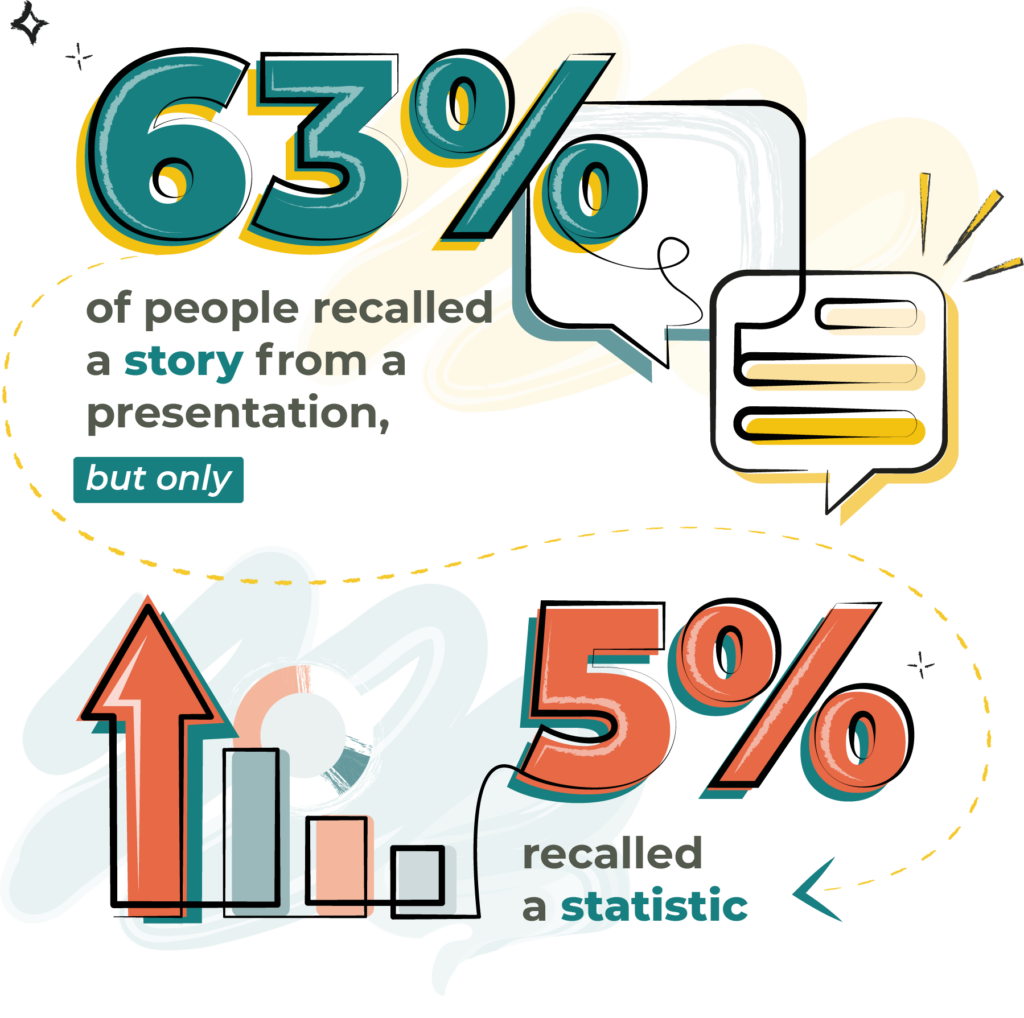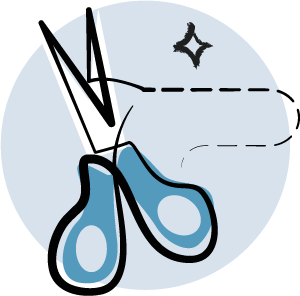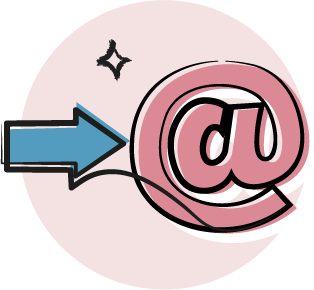Nika Talbot
What defines ‘quality content’? It can be mercurial, but you need to define it for your business to know whether your content hits the mark.
If you fancy some light background reading, here are 35+ definitions of what ‘quality’ means in content. These definitions are full of value bombs from experts from Google, Microsoft, agencies, government and more – giving you ideas and saving time.
Another way of defining ‘quality content’ is ‘engaging content’. As Doug Kessler says, “Quality content resonates with its audience. If it doesn’t do that, it ain’t quality.”
It’s easy to get lost in the weeds with data, tracking, views, and impressions – but humans are story-driven. We remember stories, not data. “63% of people recalled a story from a presentation, but only 5% recalled a statistic,” says Jennifer Aaker, a marketing professor at Stanford’s Graduate School of Business.

I also love what Kindra Hall, former Chief Storytelling Officer of SUCCESS Magazine, says about the power of storytelling – the building block of what makes us who we are.
“Your bottom line is humans, not products!”
Quality content can:

Educate, inspire, entertain – even transform someone’s life

Build an intimate relationship with your audience

Get people talking about your brand

Grow your reputation as a thought leader

Build trust and generate inbound enquiries – push vs pull content

Create opportunities for collaboration
If done well and consistently – creating content will make money for your business.
Content strategy, not content tactics
A ‘content strategy’ isn’t a document, but a set of goals for your business, along with the content plan that might deliver it. Content plans evolve constantly, based on what is changing in the world and in you, plus seeing what works and what doesn’t. A content strategy gets you thinking about your brand and your ‘why’ and is part of your overall personal marketing plan.
Janet Murray, CEO of Courageous Content, says one of the most common mistakes people make is focusing on content tactics instead of strategy. Obsessing over whether to start a podcast or YouTube channel, the best time to post on social media or which scheduling tool to use.
An effective content strategy means publishing the right content at the right time – here’s how to create a recession-proof content plan to set you up for success in ‘23.
It’s easy to get into a rut of creating the SAME content all year round to promote your products and services, which leads to diminishing returns. The trap we often fall into is spending too much time on one type of content, e.g. fannying about on social media when we need to earn money! Christopher Lochhead, the co-author of Snow Leopard: How Legendary Writers Create a Category of One, says, “it’s not about how much content you post. It’s about the content in your content.” He told me, “we think of content as thinking.”
Before you think about marketing and branding, find your niche. What do you want to be known for, in which you have a chance of standing out from the crowd?

Other initial actions to consider:

Write a mission statement – what will your content do? How will it make people feel? Here’s mine for The Shift

Create a reader persona, or even more than one. This helps to imagine talking to a real person. Find a pic on Unsplash and pin it where you can see it, to literally keep this persona front of mind. Check out Hubspot’s interactive tool to help create personas – quality content in action!

Do a content audit – check what you’ve already done, what worked and where the gaps lie. Lauren Pope is my go-to woman for this.

Talk to your audience. Kristina Halvorson, CEO of Brain Traffic and co-author of Content Strategy for the Web, says,
“Stop for a minute, take a breath, and talk to (your) customers – not about what they like, necessarily, but what they need."
“And as marketers, we need to be brave and really hear what our customers are saying."
“If you’re selling laundry detergent, it’s unlikely your customers will care about your super awesome YouTube videos if your product still can’t get the stain out of their kids’ jeans.”

Set long-term goals. Kristina says:
“I feel like I spent a lot of my time talking people out of more content and into less content."
“I believe true marketing content is content that meets our customer's needs at every point in the buying lifecycle, including post-purchase.”

So, think about technical and support content as equally important. I’ve left comments open and set up Substack Chat on my newsletter, as it’s less formal than sending a survey. I also did the #Ship30for30 course for research.
Creating killer content
There are lots of content options to choose from:

Blogs

Podcasts

Videos

Newsletters

Social media

Courses
Think about what kind of content you enjoy creating and have the time and patience to do. No point committing to video if you hate doing it; it will feel like a chore.
I think it’s best to start with writing and curation – a low-cost barrier to entry for solopreneurs and small businesses.
A great example of the power of this is James Clear, author of the bestselling book Atomic Habits, on Why I Write: Leadership at Scale and how it has helped him grow his business.
Start with ONE platform, e.g. a newsletter or blog and excel at that. Don’t spread yourself too thin and try to be everywhere.

Write to one person – your buyer persona.

Curate and share, whilst having an opinion. Be contrarian, not a yes person. Add anecdotes and stories to make it memorable.

Focus on one idea – if you have a big topic, break it into a series of posts, e.g. TechTO’s: Founder Fridays.

Share your failures as well as successes – be real. Neil Gaiman’s advice: “use your blog to connect. Use it as you. Don’t ‘network’ or ‘promote’. Just talk.”

Write as you speak (read it aloud to see if anything sounds weird).

Edit! Give yourself a day between drafts or at least a few hours!

Blog about your entire industry and field, not just your product and service.

Create a hashtag for your business. Marianne Lehnis, Founder of The Green Techpreneur, uses #SparkTheTransition.

Vary the format – short, long-form, visual, spoken, or written, e.g. if covering an event, break it into soundbites you can share across socials – Buzzfeed style!
And if you feel like you’re falling into a rut and making the same kinds of content, here are eight ways to take a fresh approach to content formats.
10x content
Ideation is the key to quality content. See what’s already out there on your topic. What’s been said, who said it, and how is it presented?
Rand Fishkin (SparkToro Founder – an excellent audience research tool btw) calls this 10x Content: “Content that is 10 times better than the best result that can currently be found in the search results for a given keyword phrase or topic.”
Go deeper with long-form high-quality content – add videos, infographics, and images.
Ideas generation machine
Ideas are everywhere. Train your brain to observe, notice and be present. Keep a diary and capture conversations. What questions do people ask you?
Use online tools to find trending topics: Google Keyword planner – how many people are searching for information on a topic?
Mine social media: Facebook groups, Twitter threads, Reddit communities (there’s a reason so many Google searches have Reddit in the title!). Also try Answer the Public and HubSpot’s free Blog Ideas Generator.
Newsjacking is adding your thoughts and opinions to breaking news stories and piggybacking on trending news topics to get noticed.
I learned about ‘creative stress’ on LinkedIn, a type of stress caused by having to always come up with creative ideas. Here are some tips on managing that and finding new story ideas.

Pukka promotion
“We’re all in marketing. Marketing is too important to be left to the marketing department” says David Packard, co-founder of HP. So how should you approach promoting your content?

Get your elevator pitch straight – what do you do, and for who? John Espirian’s (Content DNA) tagline is ‘The Relentlessly Helpful LinkedIn Nerd.’

Know your WHY and write YOUR story to share with the world – here’s Marianne’s.

Learn how to build a memorable personal brand and book your place on our Uncovering your personal brand story masterclass.

Apply the 80/20 Rule, says Derek Halpern.

Engagement IS content – leave thoughtful comments on other people’s posts.

Showing up online is no fun if you take yourself too seriously, it’s not about you says author & entrepreneur Jodie Cook.

Repurpose your blog on Medium, Tealfeed, Quora. Use LinkedIn Creator tools.

Consider hiring an influencer to promote your products – it may be faster and more effective than Facebook Ads.

Add a call to action and drive people back to your website/list. As Joe Pulizzi, the Godfather of Content Marketing, says, “Never build on rented land.”
Content never ends! Think good enough, not perfect, and commit to showing up regularly.
Providing value and building trust will lead to sales and help you grow your business.
Be patient. It IS working, it just takes time, and your efforts will pay off.
Bye for now, Content Comrade! Can’t wait to read your work.
Think this sounds like the right path for you? Come along to our monthly Community Welcome Call for new members to find out what a portfolio career could look like and how The Portfolio Collective can help you take those first steps towards professional success – and don’t forget to connect with our community!





3 responses to “How to create quality content for your personal brand”
Excellent article, and I love the links for deepening specific points. Thank you @niccitalbot
Thank you so much @niccitalbot for creating this wonderful way into the world of content for our community.
Lot to unpack in this. Thanks.